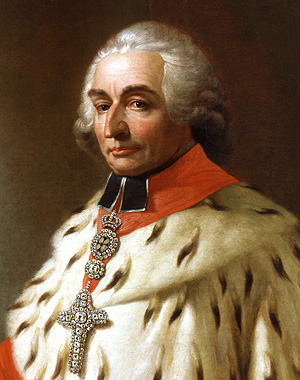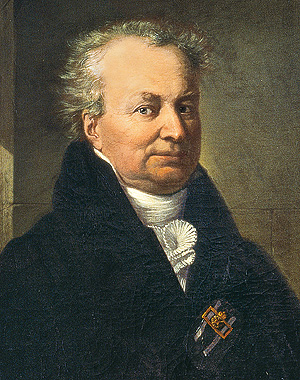Main information:
Schönbusch

The owner and the designers
The owner of the park
Friedrich Karl von Erthal (1719-1802), who was elected Archbishop and Elector of Mainz, was responsible for commissioning the park. He particularly liked staying in his second residence in Aschaffenburg in the summer. Although Erthal was very interested in the ideas of the Enlightenment, he was also partial to the splendours of life at court. Contemporaries praised his superior intellect and strength of character, but at the same time criticized him for his pedantry.
The driving force
The idea of transforming the Nilkheim hunting wood into an English landscape garden came from Wilhelm Friedrich von Sickingen (1739-1818). Sickingen, then electoral state and conference minister in Mainz, was an ardent supporter of this ambitious project. He wanted large areas of water and meadows and no fussy small-scale designs left over from the Rococo age. Since this was rarely the outcome, he was frequently at loggerheads with the gardeners responsible. In 1778 he commented for example on the new geometrical lawn terraces newly laid out by the Lower Lake saying ‘Fie! This will have to be changed at once. Only our two German ornamental gardeners could have done this.’
The architect
Emanuel Joseph von Herigoyen (1746-1817) from Portugal is the architect of all the park buildings erected in Schönbusch. He trained as an architect in Paris, studied and worked in Vienna and in 1774 entered the service of the Mainz archbishop and elector. Herigoyen was responsible not only for the architecture of Schönbusch, but also all the garden plans. The most important building he designed in the complex was the Electoral Pavilion, the present Schönbusch Palace.
The garden designer

In 1782, while Sickingen was still in the service of the Mainz electorship, Friedrich Ludwig Sckell (1750-1823) was entrusted with the further conversion of Schönbusch into a landscape park. Sckell, who was only in his early thirties and still working under the direction of his father in Schwetzingen, was in England from 1773-1776 and personally visited many of the famous English landscape gardens. In 1777 he had begun laying out part of the Schwetzingen Palace garden in the English landscape style, and had already been widely praised for his achievement. After its somewhat awkward beginnings under Sickingen, in Sckell’s hands Schönbusch became a fully-fledged landscape park. Sckell’s design featured spacious areas of water and meadows, as well as skilful shaping of the ground and the creative use of vegetation.

Recommendation in the social media
Facebook Twitter Google Plus